Passenger Transport
Cargo Transport
Emergency Medical Services
Tourism
Electric Vertical Takeoff and Landing
Hybrid Vertical Takeoff and Landing
Cargo Drones
Passenger Drones
Autonomous Systems
Electric Propulsion
Air Traffic Management Solutions
Flight Control Systems
Urban Commute
Regional Travel
Commercial Logistics
North America
Europe
South America
Asia Pacific
Middle East and Africa
North America Outlook (USD Billion, 2019-2035)
North America Urban Air Mobility Market by Application Type
Passenger Transport
Cargo Transport
Emergency Medical Services
Tourism
North America Urban Air Mobility Market by Vehicle Type
Electric Vertical Takeoff and Landing
Hybrid Vertical Takeoff and Landing
Cargo Drones
Passenger Drones
North America Urban Air Mobility Market by Technology Type
Autonomous Systems
Electric Propulsion
Air Traffic Management Solutions
Flight Control Systems
North America Urban Air Mobility Market by End Use Type
Urban Commute
Regional Travel
Commercial Logistics
North America Urban Air Mobility Market by Regional Type
US
Canada
US Outlook (USD Billion, 2019-2035)
US Urban Air Mobility Market by Application Type
Passenger Transport
Cargo Transport
Emergency Medical Services
Tourism
US Urban Air Mobility Market by Vehicle Type
Electric Vertical Takeoff and Landing
Hybrid Vertical Takeoff and Landing
Cargo Drones
Passenger Drones
US Urban Air Mobility Market by Technology Type
Autonomous Systems
Electric Propulsion
Air Traffic Management Solutions
Flight Control Systems
US Urban Air Mobility Market by End Use Type
Urban Commute
Regional Travel
Commercial Logistics
CANADA Outlook (USD Billion, 2019-2035)
CANADA Urban Air Mobility Market by Application Type
Passenger Transport
Cargo Transport
Emergency Medical Services
Tourism
CANADA Urban Air Mobility Market by Vehicle Type
Electric Vertical Takeoff and Landing
Hybrid Vertical Takeoff and Landing
Cargo Drones
Passenger Drones
CANADA Urban Air Mobility Market by Technology Type
Autonomous Systems
Electric Propulsion
Air Traffic Management Solutions
Flight Control Systems
CANADA Urban Air Mobility Market by End Use Type
Urban Commute
Regional Travel
Commercial Logistics
Europe Outlook (USD Billion, 2019-2035)
Europe Urban Air Mobility Market by Application Type
Passenger Transport
Cargo Transport
Emergency Medical Services
Tourism
Europe Urban Air Mobility Market by Vehicle Type
Electric Vertical Takeoff and Landing
Hybrid Vertical Takeoff and Landing
Cargo Drones
Passenger Drones
Europe Urban Air Mobility Market by Technology Type
Autonomous Systems
Electric Propulsion
Air Traffic Management Solutions
Flight Control Systems
Europe Urban Air Mobility Market by End Use Type
Urban Commute
Regional Travel
Commercial Logistics
Europe Urban Air Mobility Market by Regional Type
Germany
UK
France
Russia
Italy
Spain
Rest of Europe
GERMANY Outlook (USD Billion, 2019-2035)
GERMANY Urban Air Mobility Market by Application Type
Passenger Transport
Cargo Transport
Emergency Medical Services
Tourism
GERMANY Urban Air Mobility Market by Vehicle Type
Electric Vertical Takeoff and Landing
Hybrid Vertical Takeoff and Landing
Cargo Drones
Passenger Drones
GERMANY Urban Air Mobility Market by Technology Type
Autonomous Systems
Electric Propulsion
Air Traffic Management Solutions
Flight Control Systems
GERMANY Urban Air Mobility Market by End Use Type
Urban Commute
Regional Travel
Commercial Logistics
UK Outlook (USD Billion, 2019-2035)
UK Urban Air Mobility Market by Application Type
Passenger Transport
Cargo Transport
Emergency Medical Services
Tourism
UK Urban Air Mobility Market by Vehicle Type
Electric Vertical Takeoff and Landing
Hybrid Vertical Takeoff and Landing
Cargo Drones
Passenger Drones
UK Urban Air Mobility Market by Technology Type
Autonomous Systems
Electric Propulsion
Air Traffic Management Solutions
Flight Control Systems
UK Urban Air Mobility Market by End Use Type
Urban Commute
Regional Travel
Commercial Logistics
FRANCE Outlook (USD Billion, 2019-2035)
FRANCE Urban Air Mobility Market by Application Type
Passenger Transport
Cargo Transport
Emergency Medical Services
Tourism
FRANCE Urban Air Mobility Market by Vehicle Type
Electric Vertical Takeoff and Landing
Hybrid Vertical Takeoff and Landing
Cargo Drones
Passenger Drones
FRANCE Urban Air Mobility Market by Technology Type
Autonomous Systems
Electric Propulsion
Air Traffic Management Solutions
Flight Control Systems
FRANCE Urban Air Mobility Market by End Use Type
Urban Commute
Regional Travel
Commercial Logistics
RUSSIA Outlook (USD Billion, 2019-2035)
RUSSIA Urban Air Mobility Market by Application Type
Passenger Transport
Cargo Transport
Emergency Medical Services
Tourism
RUSSIA Urban Air Mobility Market by Vehicle Type
Electric Vertical Takeoff and Landing
Hybrid Vertical Takeoff and Landing
Cargo Drones
Passenger Drones
RUSSIA Urban Air Mobility Market by Technology Type
Autonomous Systems
Electric Propulsion
Air Traffic Management Solutions
Flight Control Systems
RUSSIA Urban Air Mobility Market by End Use Type
Urban Commute
Regional Travel
Commercial Logistics
ITALY Outlook (USD Billion, 2019-2035)
ITALY Urban Air Mobility Market by Application Type
Passenger Transport
Cargo Transport
Emergency Medical Services
Tourism
ITALY Urban Air Mobility Market by Vehicle Type
Electric Vertical Takeoff and Landing
Hybrid Vertical Takeoff and Landing
Cargo Drones
Passenger Drones
ITALY Urban Air Mobility Market by Technology Type
Autonomous Systems
Electric Propulsion
Air Traffic Management Solutions
Flight Control Systems
ITALY Urban Air Mobility Market by End Use Type
Urban Commute
Regional Travel
Commercial Logistics
SPAIN Outlook (USD Billion, 2019-2035)
SPAIN Urban Air Mobility Market by Application Type
Passenger Transport
Cargo Transport
Emergency Medical Services
Tourism
SPAIN Urban Air Mobility Market by Vehicle Type
Electric Vertical Takeoff and Landing
Hybrid Vertical Takeoff and Landing
Cargo Drones
Passenger Drones
SPAIN Urban Air Mobility Market by Technology Type
Autonomous Systems
Electric Propulsion
Air Traffic Management Solutions
Flight Control Systems
SPAIN Urban Air Mobility Market by End Use Type
Urban Commute
Regional Travel
Commercial Logistics
REST OF EUROPE Outlook (USD Billion, 2019-2035)
REST OF EUROPE Urban Air Mobility Market by Application Type
Passenger Transport
Cargo Transport
Emergency Medical Services
Tourism
REST OF EUROPE Urban Air Mobility Market by Vehicle Type
Electric Vertical Takeoff and Landing
Hybrid Vertical Takeoff and Landing
Cargo Drones
Passenger Drones
REST OF EUROPE Urban Air Mobility Market by Technology Type
Autonomous Systems
Electric Propulsion
Air Traffic Management Solutions
Flight Control Systems
REST OF EUROPE Urban Air Mobility Market by End Use Type
Urban Commute
Regional Travel
Commercial Logistics
APAC Outlook (USD Billion, 2019-2035)
APAC Urban Air Mobility Market by Application Type
Passenger Transport
Cargo Transport
Emergency Medical Services
Tourism
APAC Urban Air Mobility Market by Vehicle Type
Electric Vertical Takeoff and Landing
Hybrid Vertical Takeoff and Landing
Cargo Drones
Passenger Drones
APAC Urban Air Mobility Market by Technology Type
Autonomous Systems
Electric Propulsion
Air Traffic Management Solutions
Flight Control Systems
APAC Urban Air Mobility Market by End Use Type
Urban Commute
Regional Travel
Commercial Logistics
APAC Urban Air Mobility Market by Regional Type
China
India
Japan
South Korea
Malaysia
Thailand
Indonesia
Rest of APAC
CHINA Outlook (USD Billion, 2019-2035)
CHINA Urban Air Mobility Market by Application Type
Passenger Transport
Cargo Transport
Emergency Medical Services
Tourism
CHINA Urban Air Mobility Market by Vehicle Type
Electric Vertical Takeoff and Landing
Hybrid Vertical Takeoff and Landing
Cargo Drones
Passenger Drones
CHINA Urban Air Mobility Market by Technology Type
Autonomous Systems
Electric Propulsion
Air Traffic Management Solutions
Flight Control Systems
CHINA Urban Air Mobility Market by End Use Type
Urban Commute
Regional Travel
Commercial Logistics
INDIA Outlook (USD Billion, 2019-2035)
INDIA Urban Air Mobility Market by Application Type
Passenger Transport
Cargo Transport
Emergency Medical Services
Tourism
INDIA Urban Air Mobility Market by Vehicle Type
Electric Vertical Takeoff and Landing
Hybrid Vertical Takeoff and Landing
Cargo Drones
Passenger Drones
INDIA Urban Air Mobility Market by Technology Type
Autonomous Systems
Electric Propulsion
Air Traffic Management Solutions
Flight Control Systems
INDIA Urban Air Mobility Market by End Use Type
Urban Commute
Regional Travel
Commercial Logistics
JAPAN Outlook (USD Billion, 2019-2035)
JAPAN Urban Air Mobility Market by Application Type
Passenger Transport
Cargo Transport
Emergency Medical Services
Tourism
JAPAN Urban Air Mobility Market by Vehicle Type
Electric Vertical Takeoff and Landing
Hybrid Vertical Takeoff and Landing
Cargo Drones
Passenger Drones
JAPAN Urban Air Mobility Market by Technology Type
Autonomous Systems
Electric Propulsion
Air Traffic Management Solutions
Flight Control Systems
JAPAN Urban Air Mobility Market by End Use Type
Urban Commute
Regional Travel
Commercial Logistics
SOUTH KOREA Outlook (USD Billion, 2019-2035)
SOUTH KOREA Urban Air Mobility Market by Application Type
Passenger Transport
Cargo Transport
Emergency Medical Services
Tourism
SOUTH KOREA Urban Air Mobility Market by Vehicle Type
Electric Vertical Takeoff and Landing
Hybrid Vertical Takeoff and Landing
Cargo Drones
Passenger Drones
SOUTH KOREA Urban Air Mobility Market by Technology Type
Autonomous Systems
Electric Propulsion
Air Traffic Management Solutions
Flight Control Systems
SOUTH KOREA Urban Air Mobility Market by End Use Type
Urban Commute
Regional Travel
Commercial Logistics
MALAYSIA Outlook (USD Billion, 2019-2035)
MALAYSIA Urban Air Mobility Market by Application Type
Passenger Transport
Cargo Transport
Emergency Medical Services
Tourism
MALAYSIA Urban Air Mobility Market by Vehicle Type
Electric Vertical Takeoff and Landing
Hybrid Vertical Takeoff and Landing
Cargo Drones
Passenger Drones
MALAYSIA Urban Air Mobility Market by Technology Type
Autonomous Systems
Electric Propulsion
Air Traffic Management Solutions
Flight Control Systems
MALAYSIA Urban Air Mobility Market by End Use Type
Urban Commute
Regional Travel
Commercial Logistics
THAILAND Outlook (USD Billion, 2019-2035)
THAILAND Urban Air Mobility Market by Application Type
Passenger Transport
Cargo Transport
Emergency Medical Services
Tourism
THAILAND Urban Air Mobility Market by Vehicle Type
Electric Vertical Takeoff and Landing
Hybrid Vertical Takeoff and Landing
Cargo Drones
Passenger Drones
THAILAND Urban Air Mobility Market by Technology Type
Autonomous Systems
Electric Propulsion
Air Traffic Management Solutions
Flight Control Systems
THAILAND Urban Air Mobility Market by End Use Type
Urban Commute
Regional Travel
Commercial Logistics
INDONESIA Outlook (USD Billion, 2019-2035)
INDONESIA Urban Air Mobility Market by Application Type
Passenger Transport
Cargo Transport
Emergency Medical Services
Tourism
INDONESIA Urban Air Mobility Market by Vehicle Type
Electric Vertical Takeoff and Landing
Hybrid Vertical Takeoff and Landing
Cargo Drones
Passenger Drones
INDONESIA Urban Air Mobility Market by Technology Type
Autonomous Systems
Electric Propulsion
Air Traffic Management Solutions
Flight Control Systems
INDONESIA Urban Air Mobility Market by End Use Type
Urban Commute
Regional Travel
Commercial Logistics
REST OF APAC Outlook (USD Billion, 2019-2035)
REST OF APAC Urban Air Mobility Market by Application Type
Passenger Transport
Cargo Transport
Emergency Medical Services
Tourism
REST OF APAC Urban Air Mobility Market by Vehicle Type
Electric Vertical Takeoff and Landing
Hybrid Vertical Takeoff and Landing
Cargo Drones
Passenger Drones
REST OF APAC Urban Air Mobility Market by Technology Type
Autonomous Systems
Electric Propulsion
Air Traffic Management Solutions
Flight Control Systems
REST OF APAC Urban Air Mobility Market by End Use Type
Urban Commute
Regional Travel
Commercial Logistics
South America Outlook (USD Billion, 2019-2035)
South America Urban Air Mobility Market by Application Type
Passenger Transport
Cargo Transport
Emergency Medical Services
Tourism
South America Urban Air Mobility Market by Vehicle Type
Electric Vertical Takeoff and Landing
Hybrid Vertical Takeoff and Landing
Cargo Drones
Passenger Drones
South America Urban Air Mobility Market by Technology Type
Autonomous Systems
Electric Propulsion
Air Traffic Management Solutions
Flight Control Systems
South America Urban Air Mobility Market by End Use Type
Urban Commute
Regional Travel
Commercial Logistics
South America Urban Air Mobility Market by Regional Type
Brazil
Mexico
Argentina
Rest of South America
BRAZIL Outlook (USD Billion, 2019-2035)
BRAZIL Urban Air Mobility Market by Application Type
Passenger Transport
Cargo Transport
Emergency Medical Services
Tourism
BRAZIL Urban Air Mobility Market by Vehicle Type
Electric Vertical Takeoff and Landing
Hybrid Vertical Takeoff and Landing
Cargo Drones
Passenger Drones
BRAZIL Urban Air Mobility Market by Technology Type
Autonomous Systems
Electric Propulsion
Air Traffic Management Solutions
Flight Control Systems
BRAZIL Urban Air Mobility Market by End Use Type
Urban Commute
Regional Travel
Commercial Logistics
MEXICO Outlook (USD Billion, 2019-2035)
MEXICO Urban Air Mobility Market by Application Type
Passenger Transport
Cargo Transport
Emergency Medical Services
Tourism
MEXICO Urban Air Mobility Market by Vehicle Type
Electric Vertical Takeoff and Landing
Hybrid Vertical Takeoff and Landing
Cargo Drones
Passenger Drones
MEXICO Urban Air Mobility Market by Technology Type
Autonomous Systems
Electric Propulsion
Air Traffic Management Solutions
Flight Control Systems
MEXICO Urban Air Mobility Market by End Use Type
Urban Commute
Regional Travel
Commercial Logistics
ARGENTINA Outlook (USD Billion, 2019-2035)
ARGENTINA Urban Air Mobility Market by Application Type
Passenger Transport
Cargo Transport
Emergency Medical Services
Tourism
ARGENTINA Urban Air Mobility Market by Vehicle Type
Electric Vertical Takeoff and Landing
Hybrid Vertical Takeoff and Landing
Cargo Drones
Passenger Drones
ARGENTINA Urban Air Mobility Market by Technology Type
Autonomous Systems
Electric Propulsion
Air Traffic Management Solutions
Flight Control Systems
ARGENTINA Urban Air Mobility Market by End Use Type
Urban Commute
Regional Travel
Commercial Logistics
REST OF SOUTH AMERICA Outlook (USD Billion, 2019-2035)
REST OF SOUTH AMERICA Urban Air Mobility Market by Application Type
Passenger Transport
Cargo Transport
Emergency Medical Services
Tourism
REST OF SOUTH AMERICA Urban Air Mobility Market by Vehicle Type
Electric Vertical Takeoff and Landing
Hybrid Vertical Takeoff and Landing
Cargo Drones
Passenger Drones
REST OF SOUTH AMERICA Urban Air Mobility Market by Technology Type
Autonomous Systems
Electric Propulsion
Air Traffic Management Solutions
Flight Control Systems
REST OF SOUTH AMERICA Urban Air Mobility Market by End Use Type
Urban Commute
Regional Travel
Commercial Logistics
MEA Outlook (USD Billion, 2019-2035)
MEA Urban Air Mobility Market by Application Type
Passenger Transport
Cargo Transport
Emergency Medical Services
Tourism
MEA Urban Air Mobility Market by Vehicle Type
Electric Vertical Takeoff and Landing
Hybrid Vertical Takeoff and Landing
Cargo Drones
Passenger Drones
MEA Urban Air Mobility Market by Technology Type
Autonomous Systems
Electric Propulsion
Air Traffic Management Solutions
Flight Control Systems
MEA Urban Air Mobility Market by End Use Type
Urban Commute
Regional Travel
Commercial Logistics
MEA Urban Air Mobility Market by Regional Type
GCC Countries
South Africa
Rest of MEA
GCC COUNTRIES Outlook (USD Billion, 2019-2035)
GCC COUNTRIES Urban Air Mobility Market by Application Type
Passenger Transport
Cargo Transport
Emergency Medical Services
Tourism
GCC COUNTRIES Urban Air Mobility Market by Vehicle Type
Electric Vertical Takeoff and Landing
Hybrid Vertical Takeoff and Landing
Cargo Drones
Passenger Drones
GCC COUNTRIES Urban Air Mobility Market by Technology Type
Autonomous Systems
Electric Propulsion
Air Traffic Management Solutions
Flight Control Systems
GCC COUNTRIES Urban Air Mobility Market by End Use Type
Urban Commute
Regional Travel
Commercial Logistics
SOUTH AFRICA Outlook (USD Billion, 2019-2035)
SOUTH AFRICA Urban Air Mobility Market by Application Type
Passenger Transport
Cargo Transport
Emergency Medical Services
Tourism
SOUTH AFRICA Urban Air Mobility Market by Vehicle Type
Electric Vertical Takeoff and Landing
Hybrid Vertical Takeoff and Landing
Cargo Drones
Passenger Drones
SOUTH AFRICA Urban Air Mobility Market by Technology Type
Autonomous Systems
Electric Propulsion
Air Traffic Management Solutions
Flight Control Systems
SOUTH AFRICA Urban Air Mobility Market by End Use Type
Urban Commute
Regional Travel
Commercial Logistics
REST OF MEA Outlook (USD Billion, 2019-2035)
REST OF MEA Urban Air Mobility Market by Application Type
Passenger Transport
Cargo Transport
Emergency Medical Services
Tourism
REST OF MEA Urban Air Mobility Market by Vehicle Type
Electric Vertical Takeoff and Landing
Hybrid Vertical Takeoff and Landing
Cargo Drones
Passenger Drones
REST OF MEA Urban Air Mobility Market by Technology Type
Autonomous Systems
Electric Propulsion
Air Traffic Management Solutions
Flight Control Systems
REST OF MEA Urban Air Mobility Market by End Use Type
Urban Commute
Regional Travel
Commercial Logistics

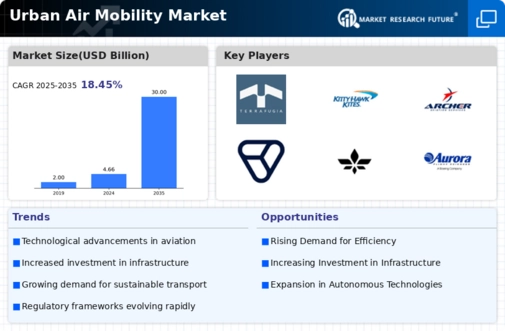
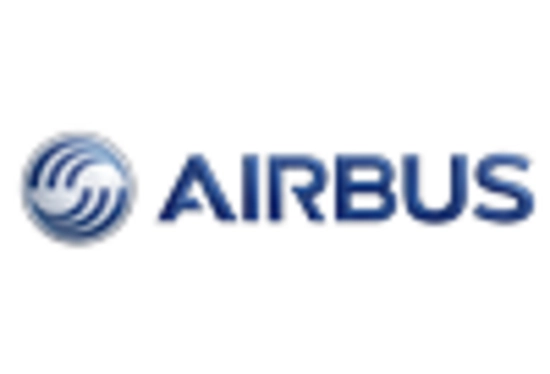
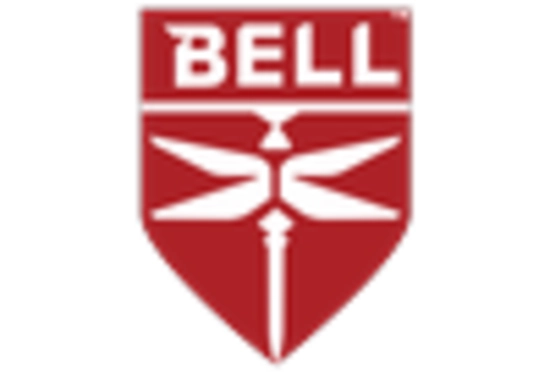

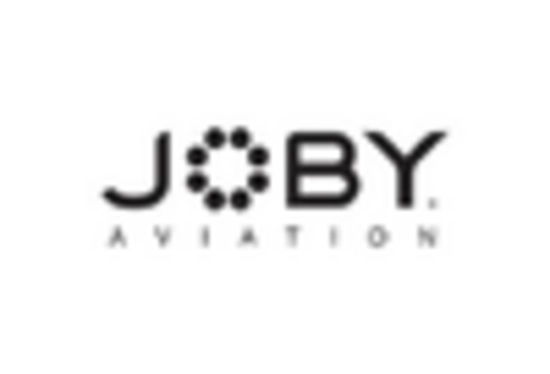

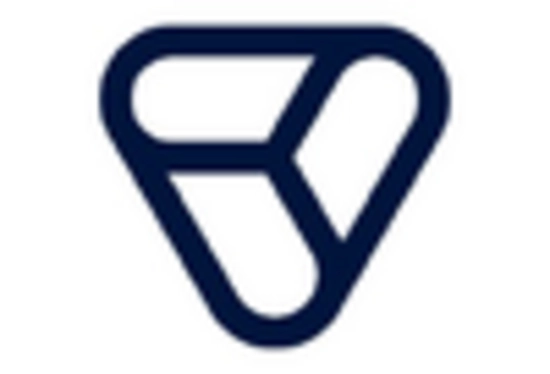

Leave a Comment